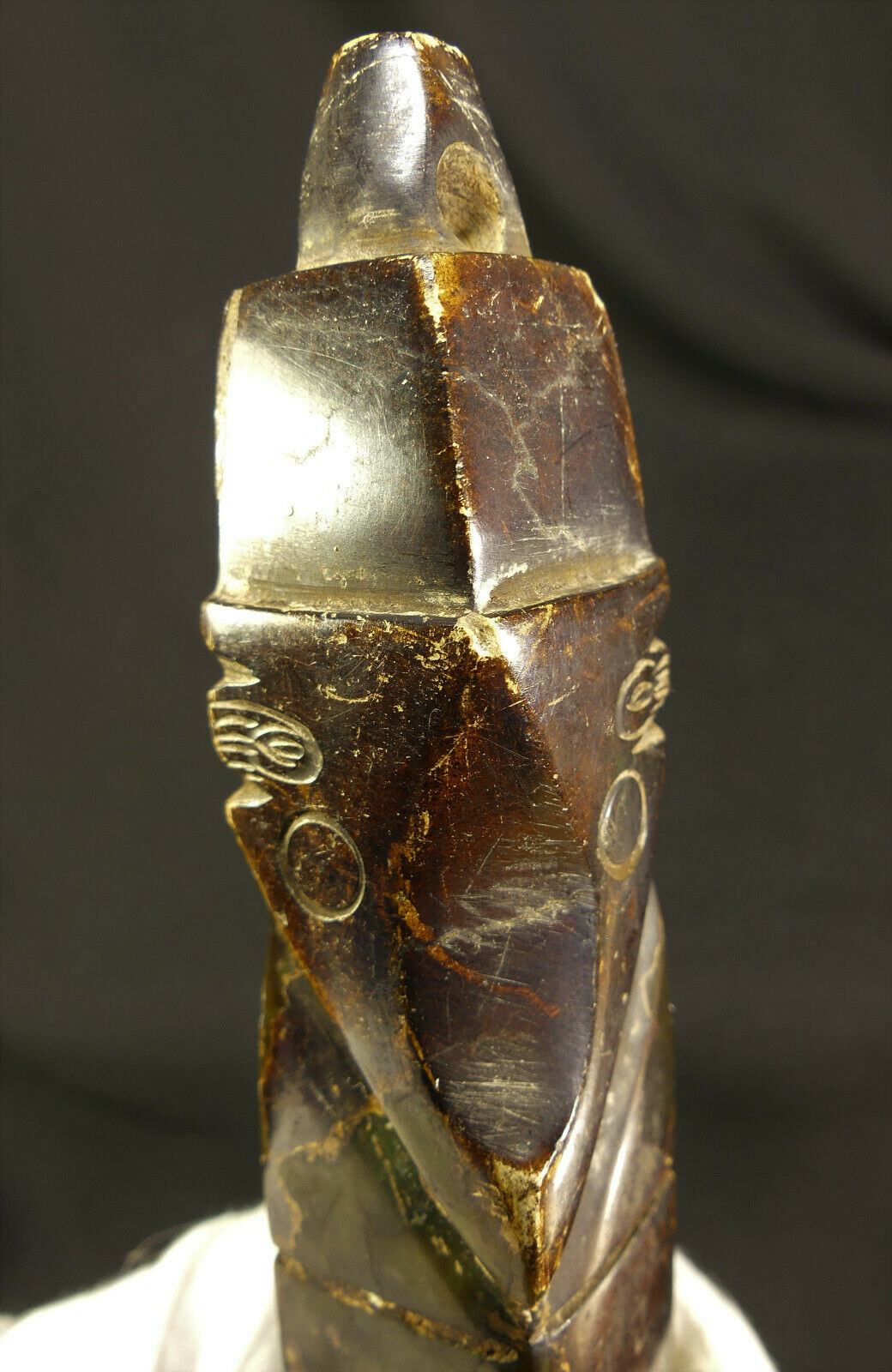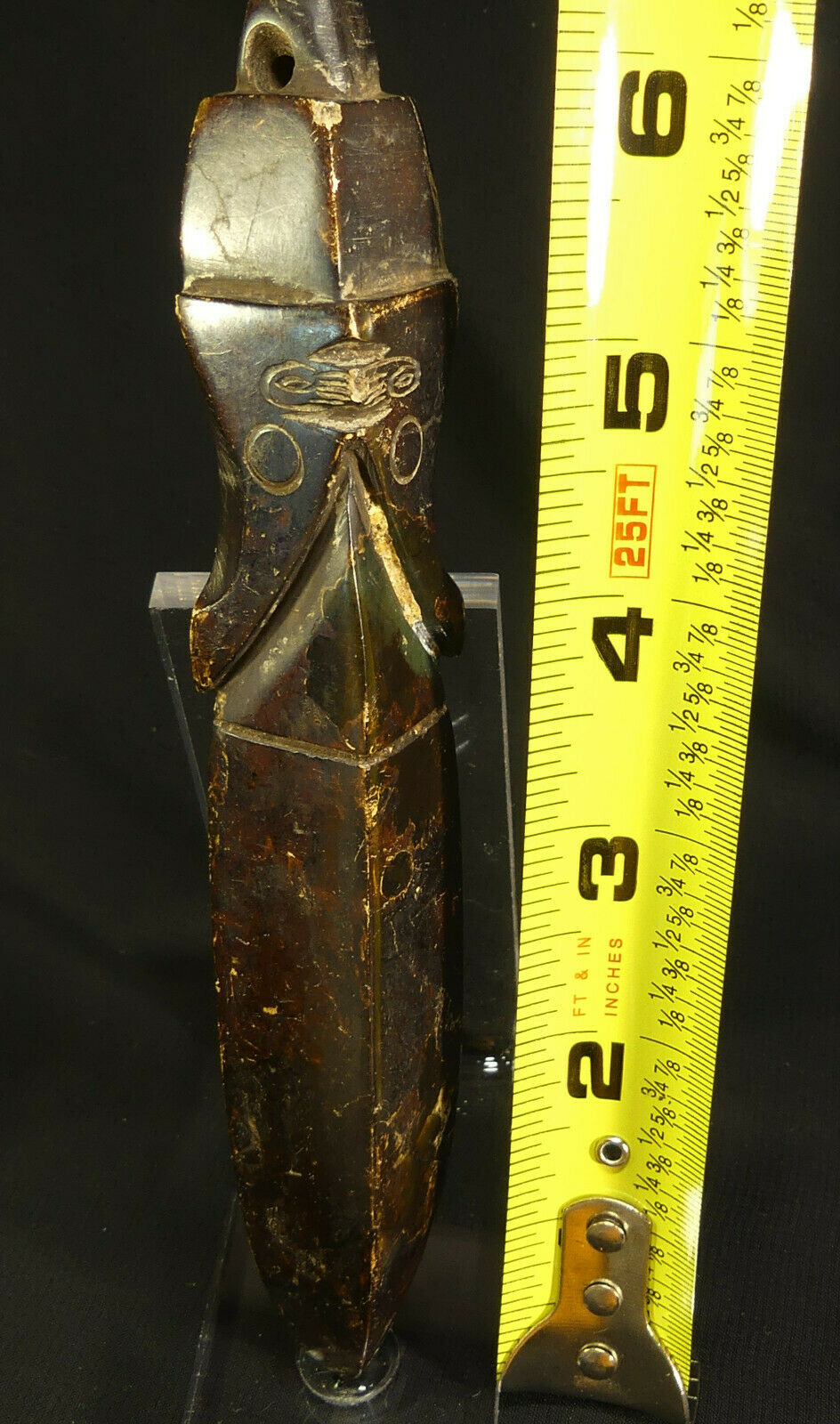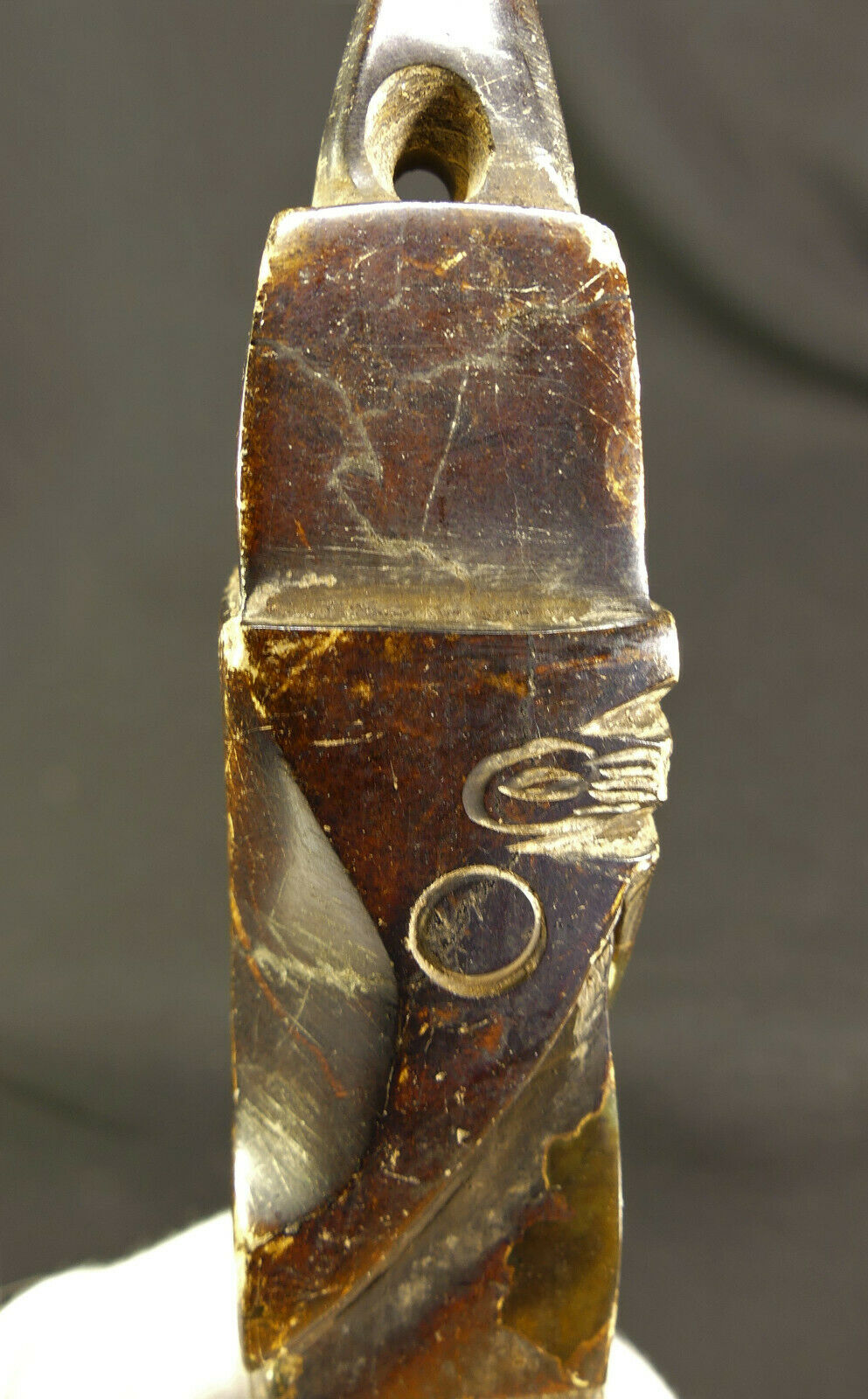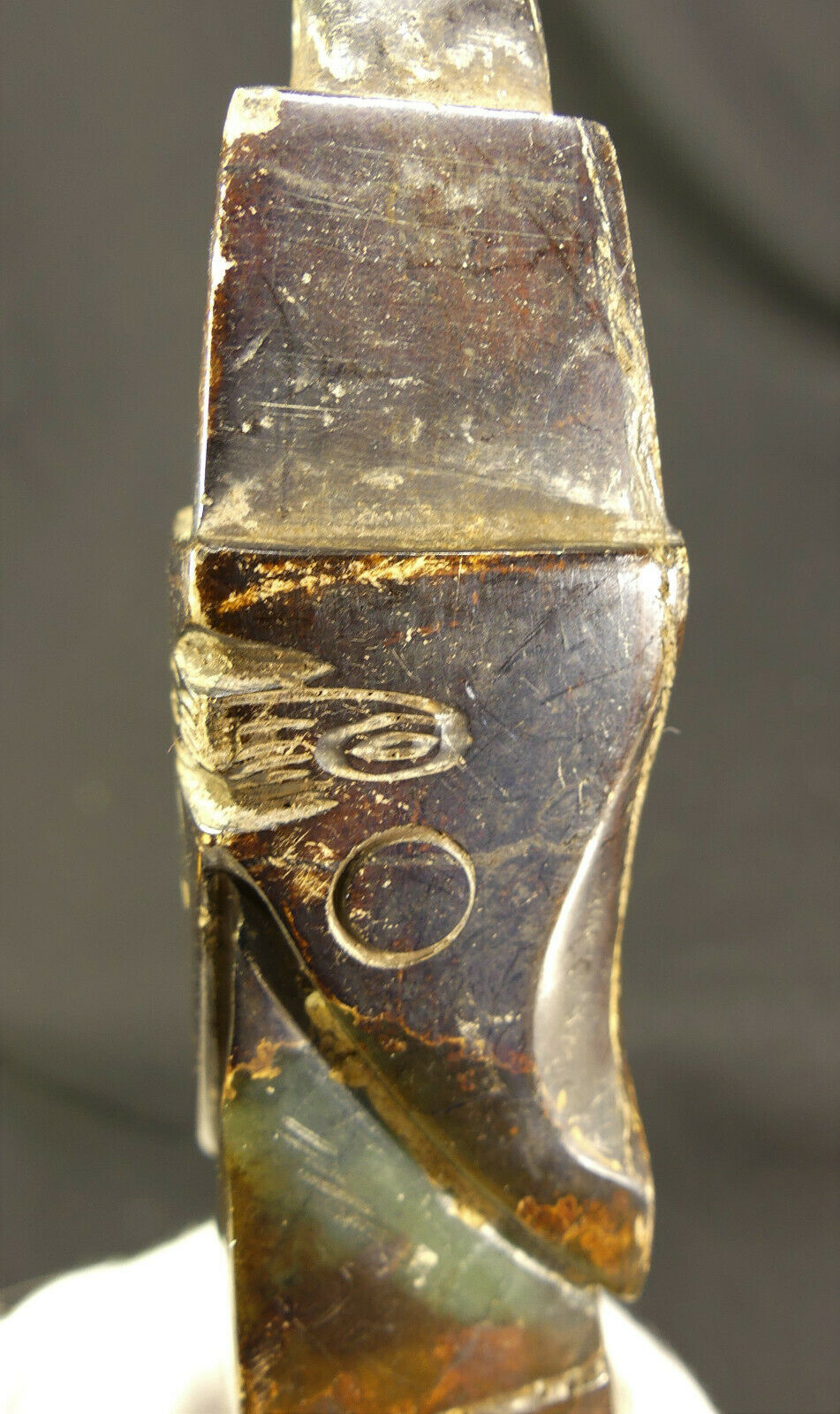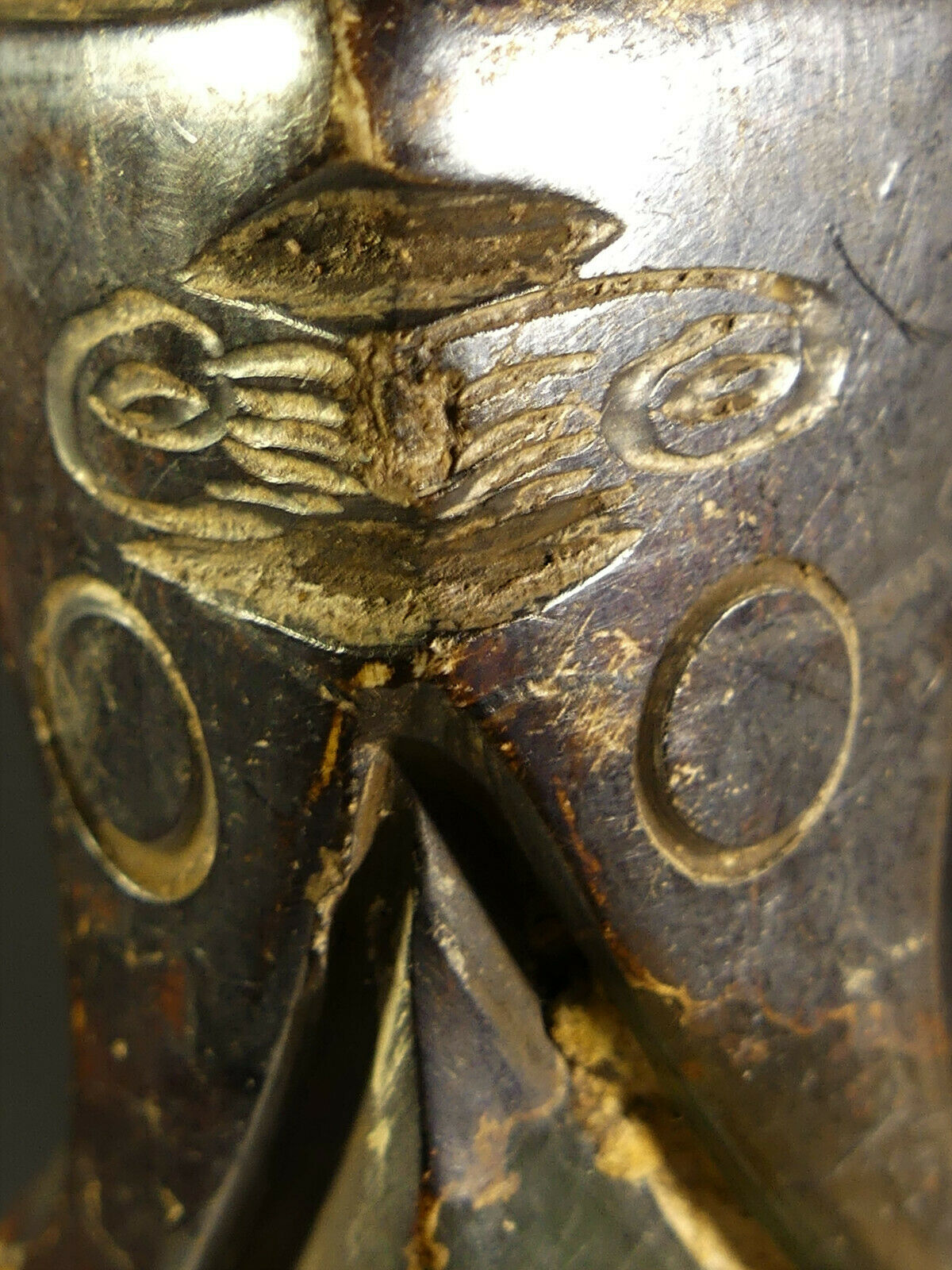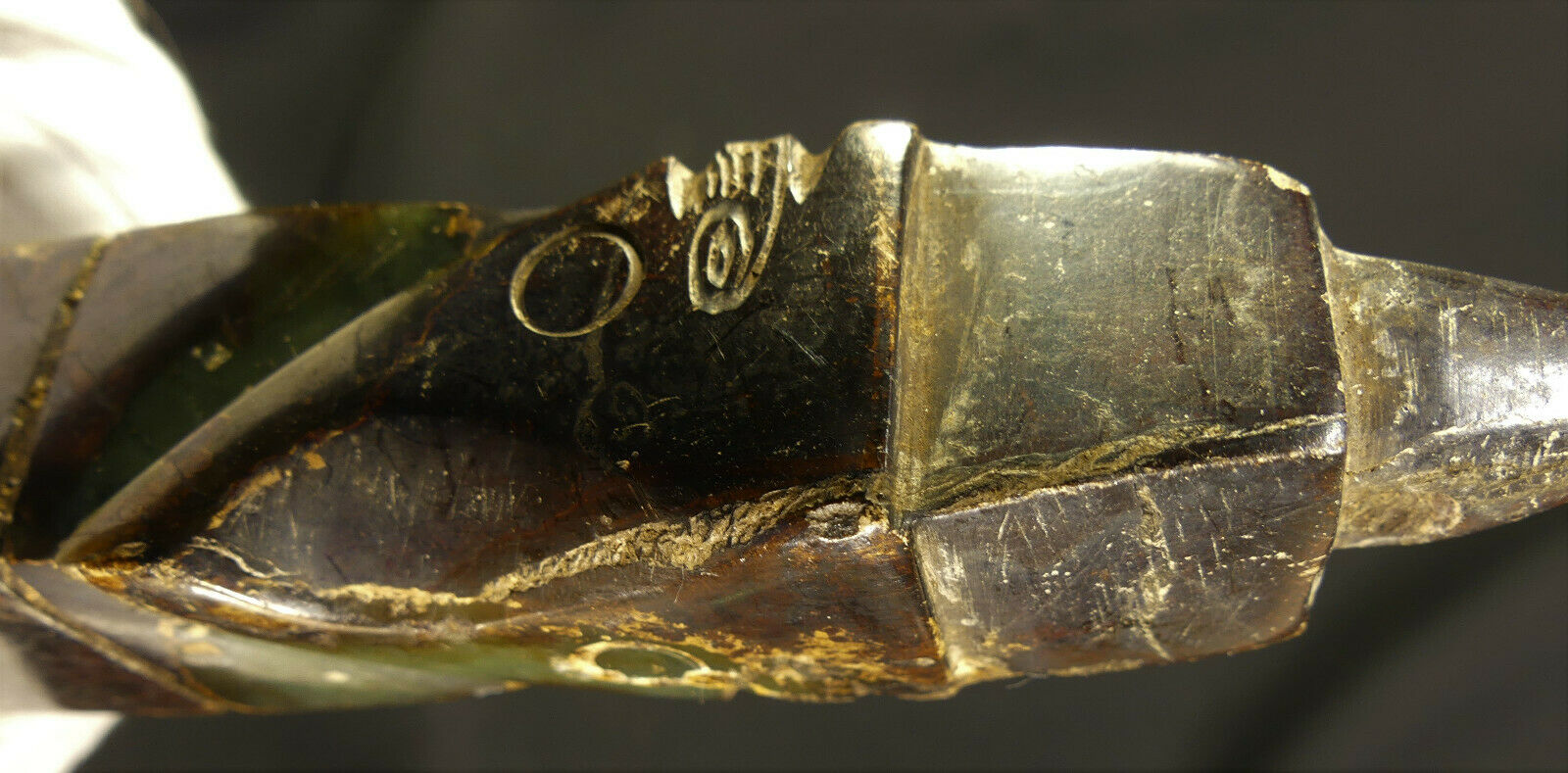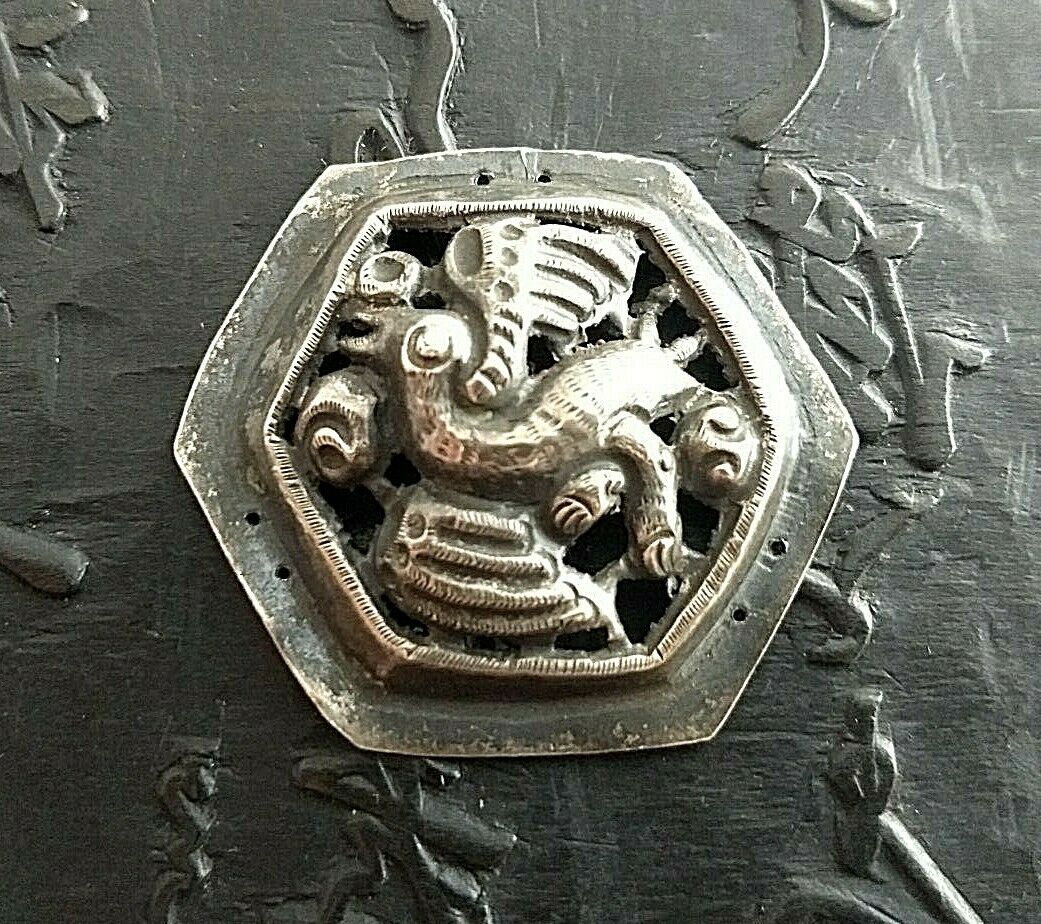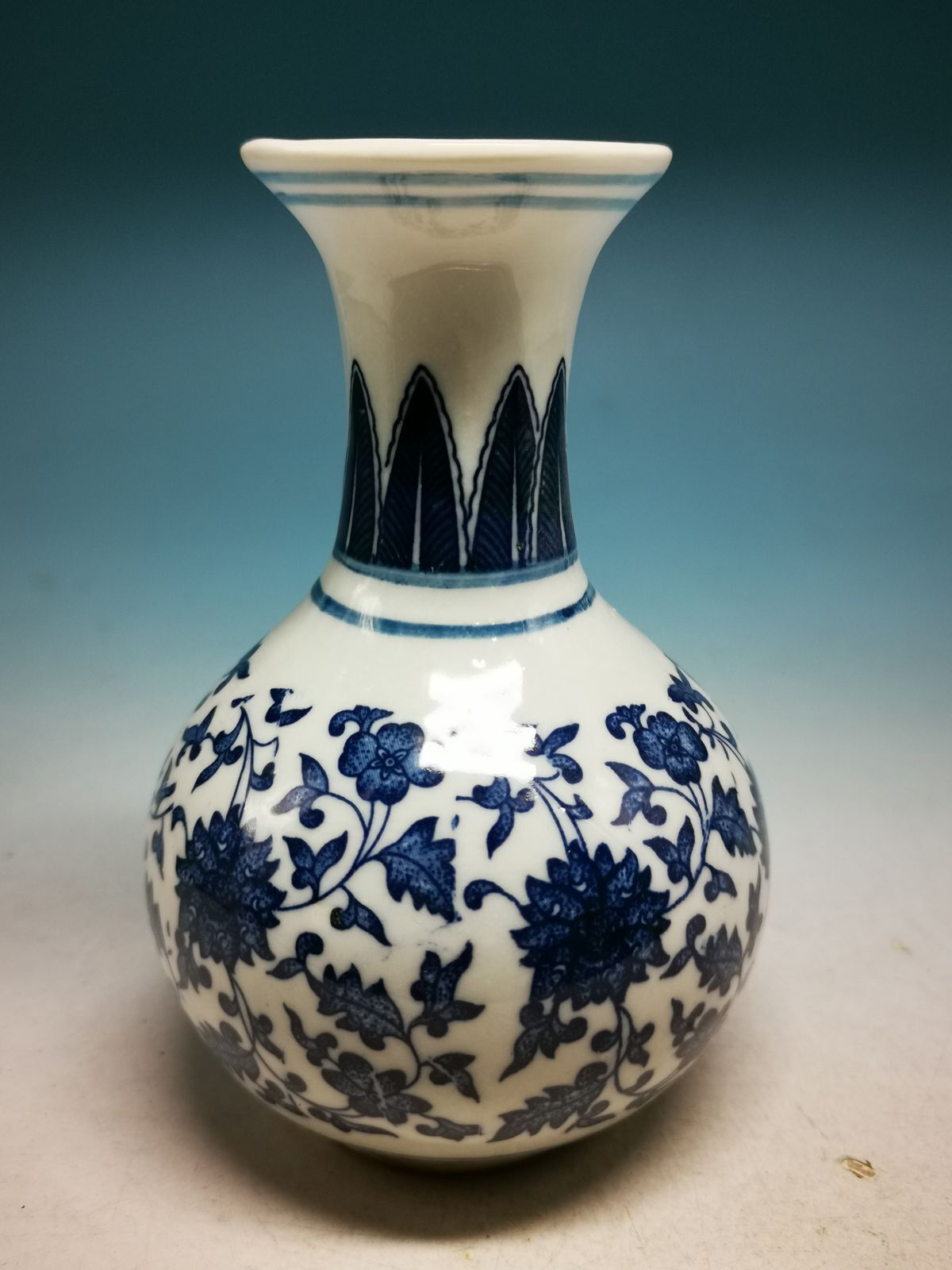-40%
Chinese Liangzhu Culture Jade 6.48“ Lightning Bolt & Sacred Man Offering # 3
$ 1568.16
- Description
- Size Guide
Description
ANCIENT CIVILIZATIONSArtifacts, Antiques & Fine Collect
i
bles
Ancient
Chinese Jade 6.48” Amulet # 3
“Lightning Bolt” or
"
Zhuixingqi
"
& Ancestor Offering
English Translation Provided of Pictographs
Liangzhu Culture
(
Chinese
:
良渚文化
)
“A Dragon can be unseen or visible, minute or huge,
long or short. However, always it is great.”
—Shuo Wen (c. 100 AD)
NOTE:
William D. Houghton, the President of ANCIENT CIVILIZATIONS
, a State of Washington Licensed Business,
assumes all responsibility for the information contained in this description and for the English translation and transcription of the ancient Chinese graphic characters.
Furthermore, I prohibit the further dissemination of this information in any written, video, or electronic format without my expressed, written approval.
Thank You!
SUMMARY
Item:
Chinese Jade Amulet:
Lightning Bolt or
"Zhuixingqi"
& Sacred Ancestor Amulet # 3
Material:
Nephrite Jade, highly polished
Culture:
Chinese
Liangzhu Culture
(Chinese:
良渚文化
)
Est. Date:
3400 BC—2250 BC
Approximate Measurements:
•
Height:
6.48” (165mm)
•
Sides:
.97” (25mm)
•
Weight:
.59oz (168gr)
Condition:
Very Good museum quality condition with no visible repairs or restorations. Some portion of the thick, dark brown patina of iron and mineral deposits has been professionally removed by previous owner in China.
This conservation allows us to see the original color of the lovely nephrite jade as it looked some 5,000 years ago.
Provenance/History:
This jade amulet was obtained from an old private collection in Nanyang, Henan Province, China.
It is one of five similar jade Lightning Bolts I purchased from the same dealer in China—each slightly different in length and each listed separately on eBay. This is the first time they have been offered for sale in the United States.
This museum quality item Extremely RARE and is Guaranteed authentic and original!
This item is legal to buy/sell under U.S. Statute covering cultural patrimony Code 2600, CHAPTER 14, and is guaranteed to be as described or your money back.
This item will come with a Certificate of Authenticity (COA) from ANCIENT CIVILIZATIONS.
DETAILS
This is a wonderful, museum quality jade amulet carved in “Lightning Bolt” or in Chinese
Zhuixingqi
design or like an Egyptian, obelisk-formed shape, which is considered as the amulet to prevent owner against Evil Spirits and bring good luck to its owner.
The amulet shows the distinctive and authentic patina of ancient weathering and mineralization that has formed on the surface of the jade from the iron and other elements/minerals in the damp soil where it was buried for over 5,000 years.
The slender amulet has a single, “biconical bore hole” drilled in the shouldered, tenon joint and then set inside a mortise joint that presumably would have been used to support the amulet on a wooden pole, with the pointed end displayed at the top.
The inside walls of the hole have an authentic patina of calcium and micro-crystalline jade that further authentic this amulet as authentic.
Archaeologists have excavated these artifacts from Liangzhu tombs in groups of between three and nine pieces.
They have been found in the upper area of the skull and vary in length between 13/8” and 7 7/8” (3 and 20 cm).
This example is an especially long amulet at 16.5 cm. or 6.48”.
The triangular head that has been beautifully carved into two sides of the four-sided amulet represents a Sacred Ancestor who eternally lives in Heaven (
Tian
) and can protect their descendants from Evil Spirits who were thought to lurk everywhere of Earth and that were able to present the souls of the departed from reaching Heaven.
On two edges between two of the Sacred Ancestors heads, we see the detailed work of the Liangzhu Culture stonemason that has incised the distinctive scroll work design of the mouth of an ancestor.
Painted in black paint on all sides of the amulet are incredibly small pictographs that verify that this man/woman was the Emperor or at a minimum held a high-level position in the Emperor’s court or his family, as no ordinary man or woman would have dared to have an Imperial Dragon on a piece of jade that would have been placed in a tomb or in his or her temple. {See details below.}
This 5,000-year-old ritual jade amulet contains several pictographs and characters that were painted onto the jade dragon; however, the characters have faded over millennia and except for one pictograph of a Fire-Breathing Dragon are undecipherable.
These pictographic characters on ritual and tomb jades are the earliest form of a written language in ancient China.
Modern archeologists call these early pictograms oracle bone script as they have been found as a permanent record that was written by scribes on both oracle bones of cattle and on ritual jade artifacts.
Dragon Symbolism in China
In China, the Dragon (in Chinese “
Long
”) has for millennia been the symbol of the Emperor, the Son of Heaven, eternity, Yang and Yin, as well as for male vigor and fertility.
The Dragon is considered as one of the 12 Ornaments and one of the most comp00lex and multi-tiered Chinese symbols. The Chinese dragon can fiercely protect one from Evil Spirits and harm.
The nine major characteristics of a lung-type dragon include a camel-like head, deer-like horns, hare-like eyes, bull-like ears, an iguana-like neck, a frog-like belly, carp-like scales, tiger-like paws and eagle-like claws.
This bronze dragon has a pair of large canine teeth and long, tendril-like whiskers extending from either side of its mouth that were thought to be used for feeling its way along the bottom of muddy ponds.
In China, the dragon is credited with having great powers that allowed it to make rain and control floods by striking the river with its mighty tail, for example.
Dragons are also revered for their ability to transport humans to the celestial realms after death.
They are symbols of the natural world, adaptability, and transformation to immortal status. When two dragons are placed together in opposite directions, they symbolize eternity, i.e., the famous Yin-Yang symbol.
Chinese emperors literally thought they were the real dragons and Sons of Heaven. Thus, the beds they slept on are called "dragon beds;" the throne, a "dragon seat;" and the emperor's ceremonial dresses are known as "dragon robes."
In the minds of the early Chinese people, the dragon was a god that embodied the will and ideals of the Chinese people. It is said that the dragon is a large-scaled reptile, which can become dark or bright, large or small, long or short, and fly into the sky in the spring and live underwater in the fall.
It seems that the dragon is capable of doing almost anything.
Traditionally, the dragons were considered the governors of rainfalls in Chinese culture. They had the power to decide where and when it would rain. They also believed kings of water dragons lived in dragon palaces under the ocean. The Chinese sign for the dragon appeared during the Yin and Shang dynasties (16th-11th century BC -- the period of the earliest Chinese hieroglyphs), between inscriptions on bones and turtle shields. The inscriptions depicted a horned reptile, with teeth, scales and sometimes even claws.
In ancient China, nobody had any doubt about the existence of dragons. People showed great respect for any depictions of dragons -- in paintings, carvings, and writings. As a result, the dragon became the symbol of the Chinese nation. All people in China, including the emperor, prostrated themselves before the image of a dragon with reverence and awe. As a result, this fictional creature became the spiritual sustenance for the nation first as the totem of a tribe and then as the symbol of the nation. Eventually, the dragon became the symbol on the national flag of the last feudal dynasty, the Qing Dynasty. The Chinese people considered themselves the descendants of the dragon.
As the emblem of the emperor and imperial command, the legend of the Chinese dragon permeates the ancient Chinese civilization and has shaped its culture. Its benevolence signifies greatness, goodness and blessings.
REFERENCES:
•
The Ancestral Landscape
, David N. Knightley, 2000
•
Chinese Characters
, Dr. L. Wieger, S.J.
•
Metropolitan Museum of Art, NYC
•
Archaeology, Archaeological Institute of America, Feb/March 2015
•
Shanghai Museum, China
•
Museum of Chinese History, Beijing, China
•
National Palace Museum, Taipei, Taiwan
•
British Museum, UK
•
Smithsonian Museum, Sackler & Freer Gallery, WDC
Please examine the macro photos carefully as they are part of the description.
The stand is not part of the auction, just included to give you a better perspective.
And please ask any questions before you buy.
International Buyers are responsible for all import duties, import taxes, shipping charges and insurance costs.
International Returns are
NOT
accepted.
Note:
Please ask any questions you may have before you bid! Thanks for Looking!
